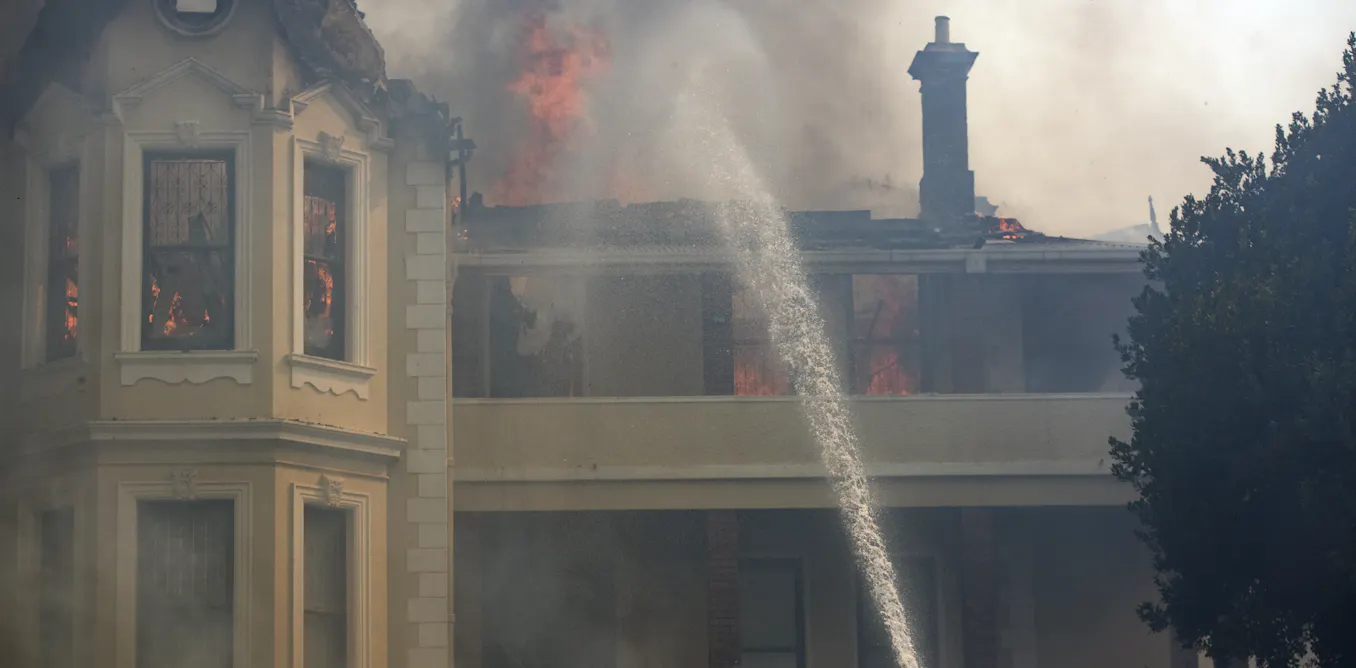By Associate Professor of Public Health,Maasago M. Sepadi,PhD in public health,Sefako Makgatho Health Sciences University,Tshwane University of Technology; Martha Chadyiwa
Copyright theconversation

Students at South African universities have to deal with a disturbing reality. They face the threat of violent crime, in particular gender-based violence. They also battle with substandard infrastructure – some of it life threatening. And institutions aren’t ready to respond.
We are academics in environmental health and public health. Our work examines occupational health and safety in educational environments.
We recently completed a review of health and safety challenges in South African universities. We looked at public records, police reports, campus press statements, and national media coverage of violent incidents. We also noted infrastructure hazards reported at South African universities from 2015 to 2024.
Our study covered 10 of South Africa’s 26 public universities to identify campus safety trends.
Our findings reveal persistently high levels of danger, including murder and bad student housing conditions.
Rather than declining over the 10-year period studied, incidents appear to be occurring with greater frequency and severity. This suggests that interventions have not done enough about systemic safety challenges.
Campus safety crisis and evidence-based solutions
South Africa has some of the world’s highest crime rates. In 2024, the country had a crime index of 75.4, which is to be considered high. Over the observed period, the value fluctuated between 75 and 77. The same index ranks the country as the fifth most dangerous in the world.
Our findings show that this pervasive violence has entered higher education institutions. It has created unsafe learning environments that compromise student welfare and academic achievement.
Violence on campus
Over the 10-year review period, we found repeated and widespread reports of violence involving students and staff.
Fatal violence was concentrated in certain provinces, notably Gauteng and KwaZulu-Natal. Gender-based violence and student murders occurred in both formal university residences and off-campus areas.
Between January 2023 and September 2024, for example, at least 17 students were murdered across South Africa, based on police and media reports.
In 2023, the vice-chancellor of the University of Fort Hare, Professor Sakhela Buhlungu, was the target of an assassination attempt. During the attack, his bodyguard, Mboneli Vesele, was shot and killed while waiting for Buhlungu outside his home.
Women students were subject to rape and other forms of gender based violence. Our review recorded dozens of reported cases of rape and sexual assault in universities. Between 20% and 25% of female university students in South Africa report being sexually victimised during their studies. In 2017, South African university campuses recorded 47 cases of rape and sexual assault. The University of Cape Town had the highest number, nine cases. South Africa has 1.2 million students in its universities in 2025.
Gender-based violence cases are often under reported because of stigma and fear. Some universities lack support systems or clear procedures for handling complaints. Despite national policy pressure, the sector remains far behind in offering consistent protection and care.
Dangerous infrastructure and unsafe residences
Our findings show widespread problems with student housing.
Much of it is overcrowded, under-maintained and structurally unsafe. For instance, the University of Johannesburg’s 2022 occupational health risk assessment identified 11 high-risk sites on campus. These were linked to hazards such as poor ventilation, roof leaks and chemical exposure. An additional 33 areas were classified as moderate risk due to biological hazards, poor sanitation and inadequate waste management systems.
We also found that security in student accommodation was a concern. At some institutions, residences have unsecured entry points, making them easily accessible to intruders. Our research shows that lack of control has contributed to serious incidents, including killings and assaults inside residence rooms.
Substandard living conditions directly affect academic performance. Research shows that poor housing environments increase anxiety, illness and dropout rates.
Many universities rely on third-party providers to supplement campus housing. Oversight and safety standards in these accredited residences vary.
Poor response rates
Most universities lack clear protocols to respond to safety incidents.
In several high-profile incidents, including fatal attacks, university leadership delayed communication with students or failed to implement follow-up safety measures.
A few institutions have introduced safety initiatives like SMS alert systems, gender-based violence offices, and campus safety audits. These appear insufficient to address the systemic nature of campus safety challenges.
Violent incidents continue to rise. This suggests that the sector needs coordinated measures.
But there is no universal safety standard or consistent oversight to enforce safety requirements across institutions.
Safety and student success
This is more than a security problem.
Our research demonstrates that campus violence directly undermines academic achievement. Others show that unsafe student housing conditions have a negative impact on academic success. Students living in unsafe environments can’t focus on their studies.
Our analysis points to five critical intervention areas:
annual safety audits with external verification and public reporting
real-time campus alert systems integrated with security and law enforcement
survivor support units staffed by professionals offering psycho-social care and legal advice
safety-linked funding mechanisms
interdisciplinary safety committees.
Universities must be legally required to conduct comprehensive annual safety audits through independent, accredited assessment bodies. They should evaluate physical infrastructure integrity and student housing conditions. Similarly, campus crime patterns, emergency response capabilities, and compliance with occupational health and safety standards. Audit reports must be publicly accessible within 30 days of completion.
The Department of Higher Education and Training should tie funding to campus safety performance.
Expertise in criminology and victimology should be part of safety planning processes at universities. They would bring evidence to the design of safety measures.
Students must also be involved in designing and overseeing safety strategies. Student committees, peer-led awareness campaigns, and direct input into campus policy are essential for building trust and driving action.



